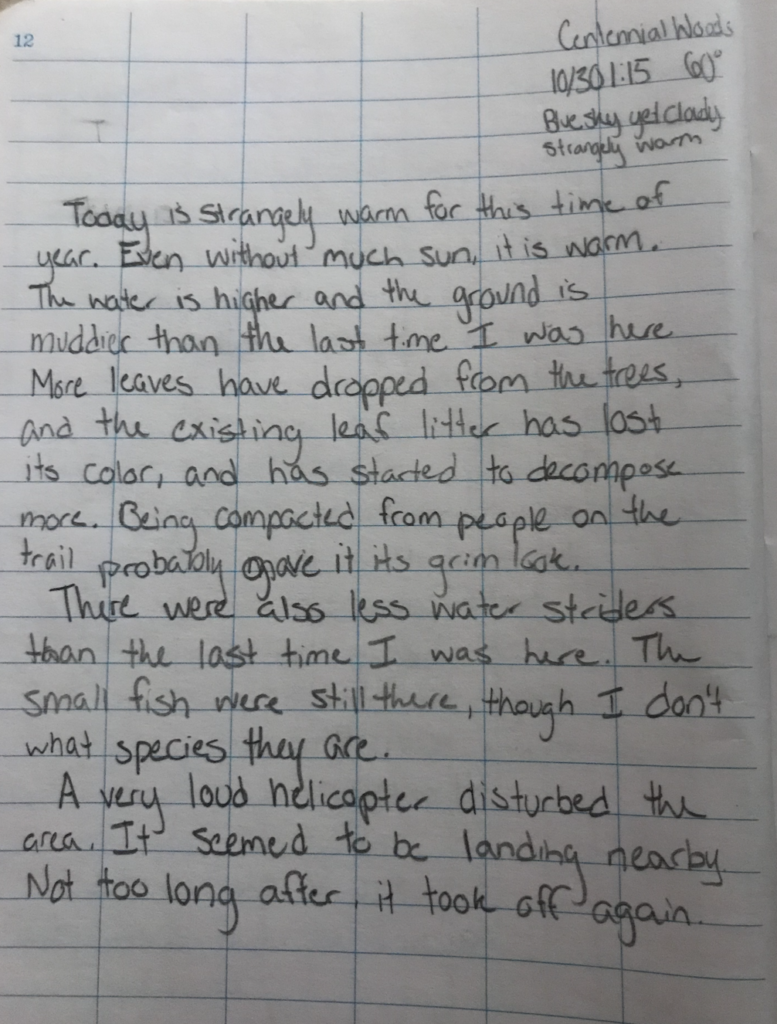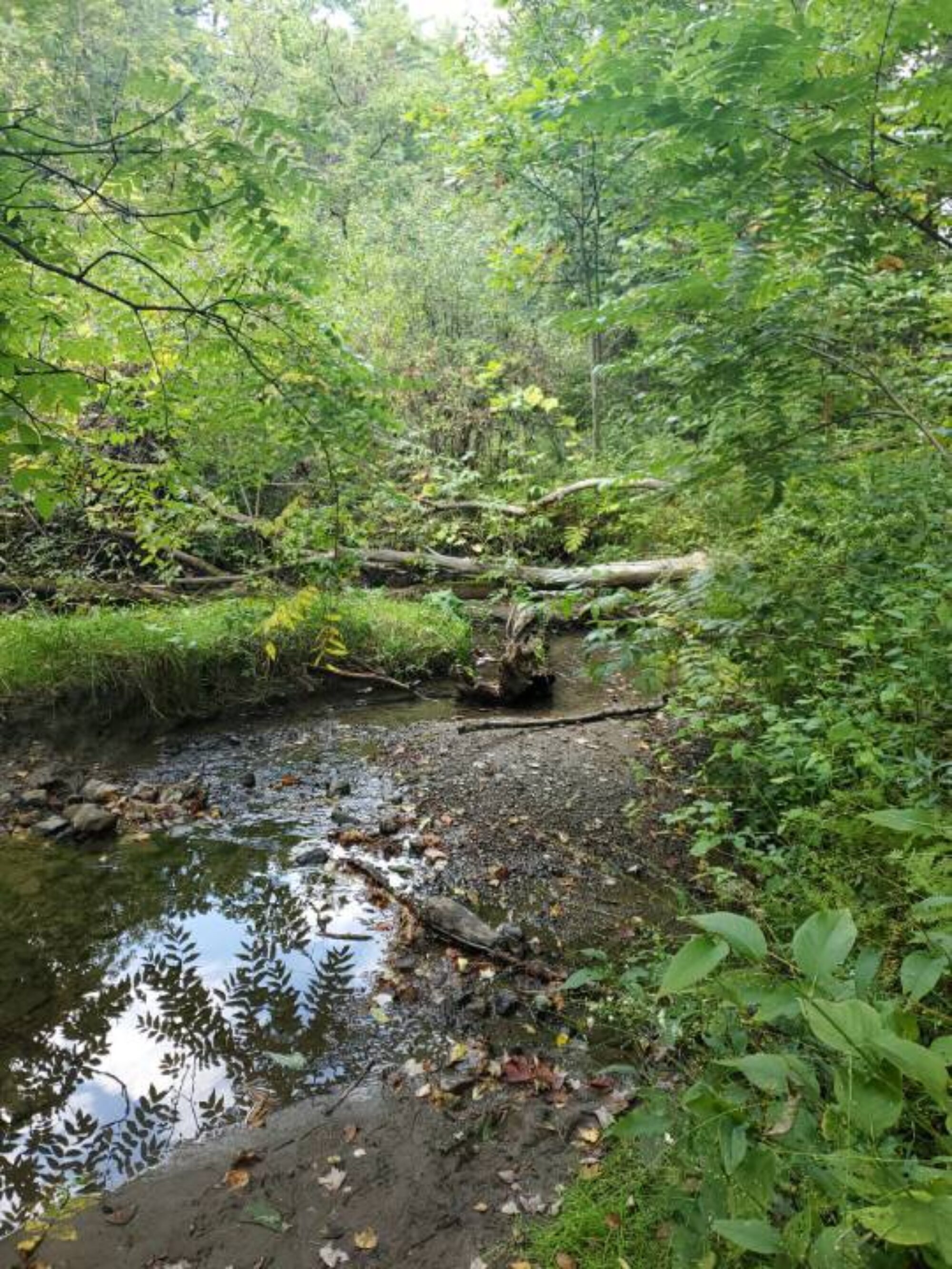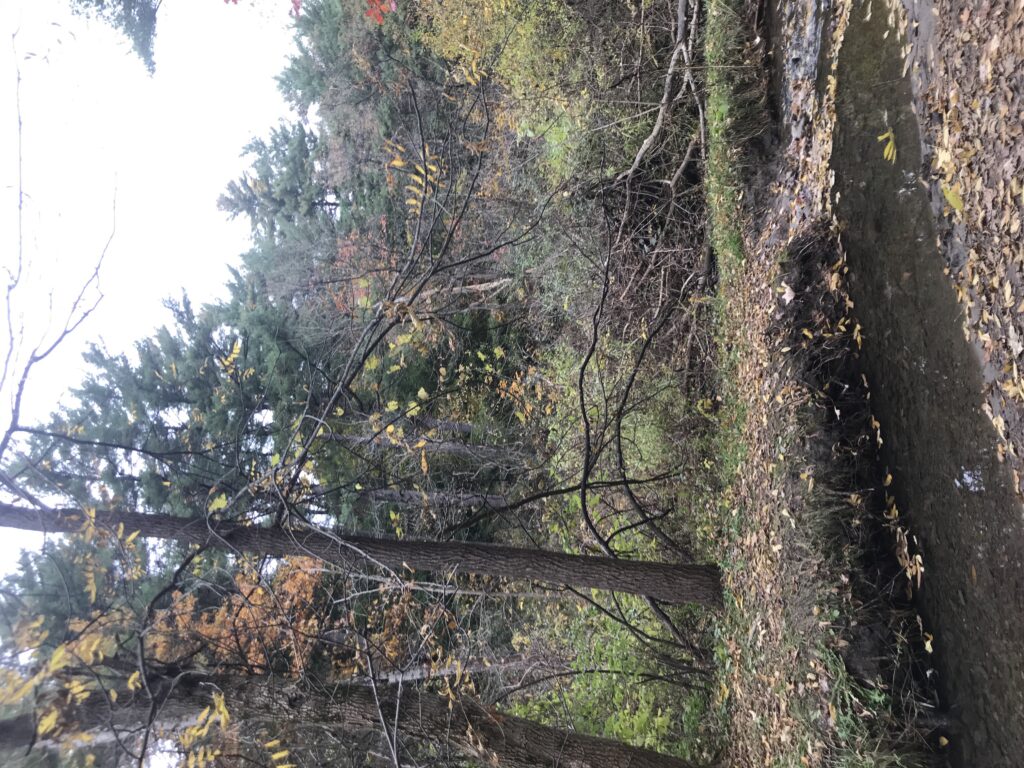While at my site today, I was on the lookout for different organisms. Regarding animals, this was a difficult task. The weather has gotten cold, and this area has many visitors a day. This causes less of an abundance of wildlife. However, there was a variety of plant species. I was able to find ferns, white pines, red oaks, and an eastern black walnut. In the stream, I was able to see the small fish I had seen the last time. I was unable to identify them, and I am still unsure of what species they are. I also found one water strider. The last time I was here, there were plenty of them. I suppose the change is due to the change of seasons.
As for vegetation at my phenology site, there was a lot of change in the small amount of time I was away. The grass on the bank is less lively, the deciduous trees dropped more of their leaves, and the previous leaf litter lost its color. It felt like everything in the area was dying, though these are natural changes.
As for the topography and soil, the bank by the river was much muddier than it was last time. Going along with that, the river water was higher. I’m sure that the leaf litter currently occurring will have an impact on the soil too. Because this is right off of a very popular trail, the soil is very packed down in some spots, and muddy in others.
Mapping my phenology site has changed my view of my site because it has given me a better sense of my place. Being able to understand where my spot is when I’m not there is great. Trying to think about where my place is, and recreate it through drawing challenged me. How well do I know this place? Once I drew the map, brought it to my site, and then compared it to google maps, I realized I knew the general area pretty well, but not the twists and turns of the trail. The more time I spend there, the better I will get to know it, and the deeper the connection with my place will be. I’m excited to get to know this place better.










